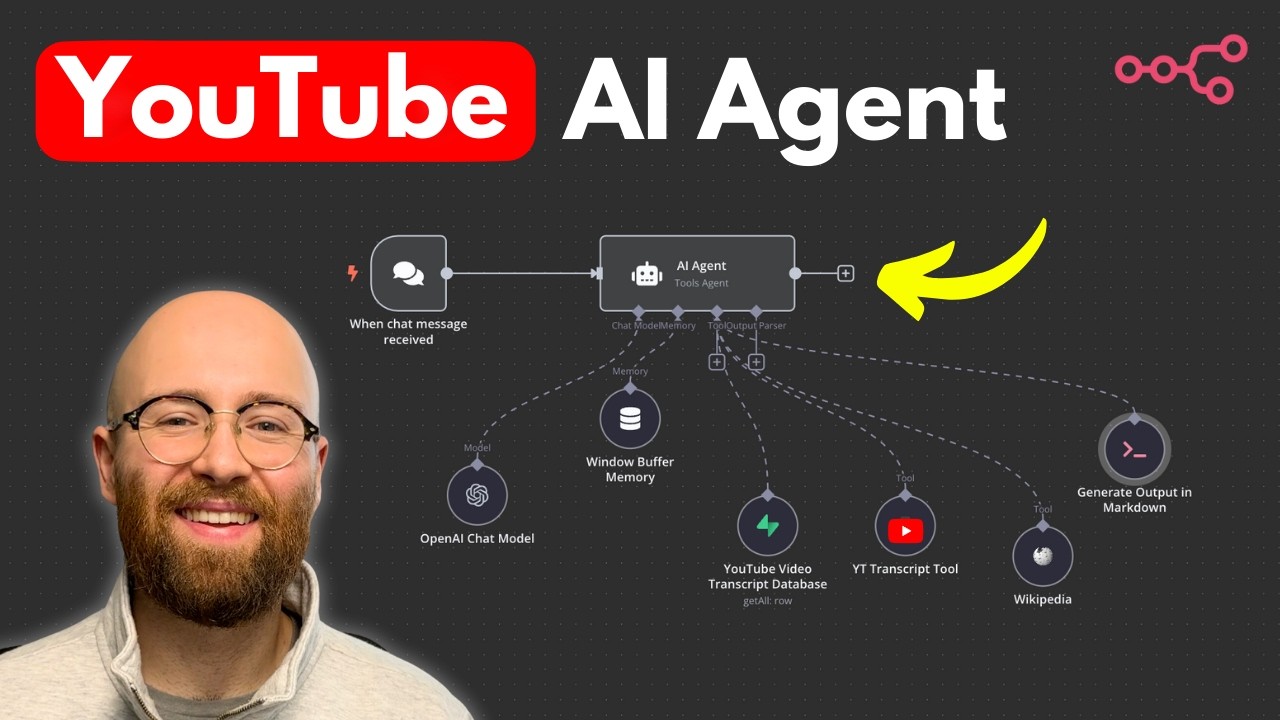The video tutorial demonstrates how to create an AI agent that interacts with YouTube videos, enabling users to chat about content, generate newsletters, and retrieve timestamps using a no-code platform called N1. It covers the setup process, integration of tools like Wikipedia and YouTube transcripts, and the use of a database to store transcripts, ultimately showcasing the AI agent’s ability to enhance user engagement with video content.
In the video, the creator demonstrates how to build an AI agent that can interact with YouTube videos, allowing users to chat with the content, generate newsletters, and retrieve timestamps. The tutorial begins with a live demonstration where the AI agent answers questions about a specific video, such as the dates for a free course and whether a platform called DataCamp is legitimate. The AI agent utilizes Wikipedia for fact-checking and can also create a newsletter based on the video content and its transcript.
The tutorial then transitions into the step-by-step process of building the AI agent using a no-code platform called N1. The creator explains how to set up the environment locally, including installing necessary tools like Node.js and npm. After setting up, users are guided through creating a workflow that includes adding an AI agent capable of processing chat messages and remembering previous interactions. This memory feature allows the agent to maintain context, making it more effective in responding to user queries.
Next, the video covers integrating various tools into the AI agent, such as Wikipedia for fact-checking and a YouTube transcript tool. The creator explains the challenges of accessing YouTube transcripts through APIs and web scraping, ultimately opting for community nodes within the N1 platform. By installing a community node for YouTube transcription, the AI agent can retrieve video transcripts based on the video ID, enhancing its functionality.
The tutorial also delves into storing the retrieved transcripts in a database using Supabase, a free and open-source database management system. The creator demonstrates how to create a table to store YouTube transcripts, including fields for unique IDs, timestamps, and the text of the transcripts. This allows the AI agent to access previously stored transcripts, reducing the need to fetch them repeatedly and improving efficiency.
Finally, the video concludes with a demonstration of how the AI agent can generate files, such as markdown documents, based on user requests. The creator shows how to execute commands that write output to files on the local machine, allowing users to easily save and access generated content. The tutorial emphasizes the potential of this AI agent to streamline interactions with YouTube videos, making it a powerful tool for content creators and viewers alike. The creator encourages viewers to engage with the community and provides links for further resources and upcoming projects.
